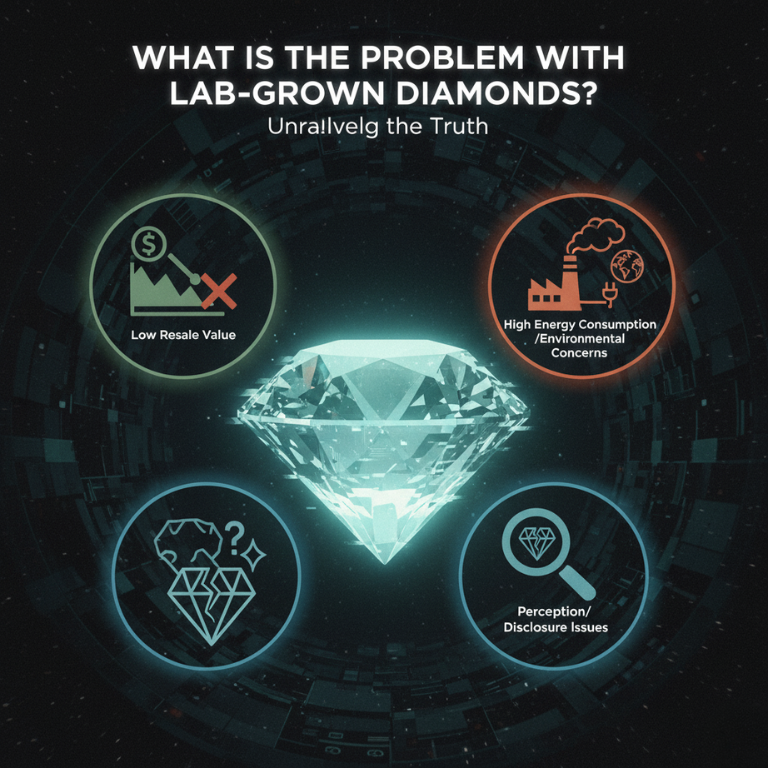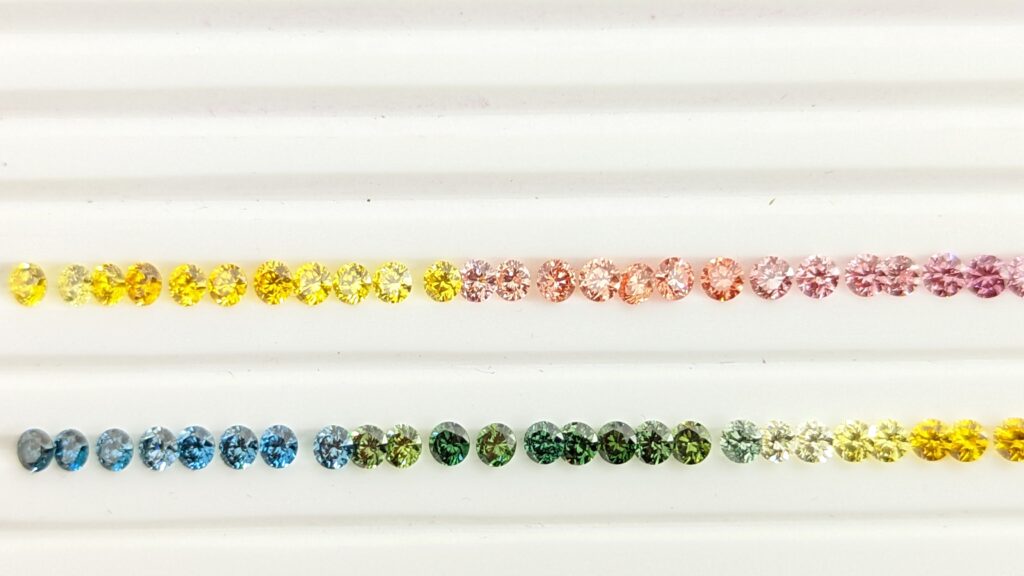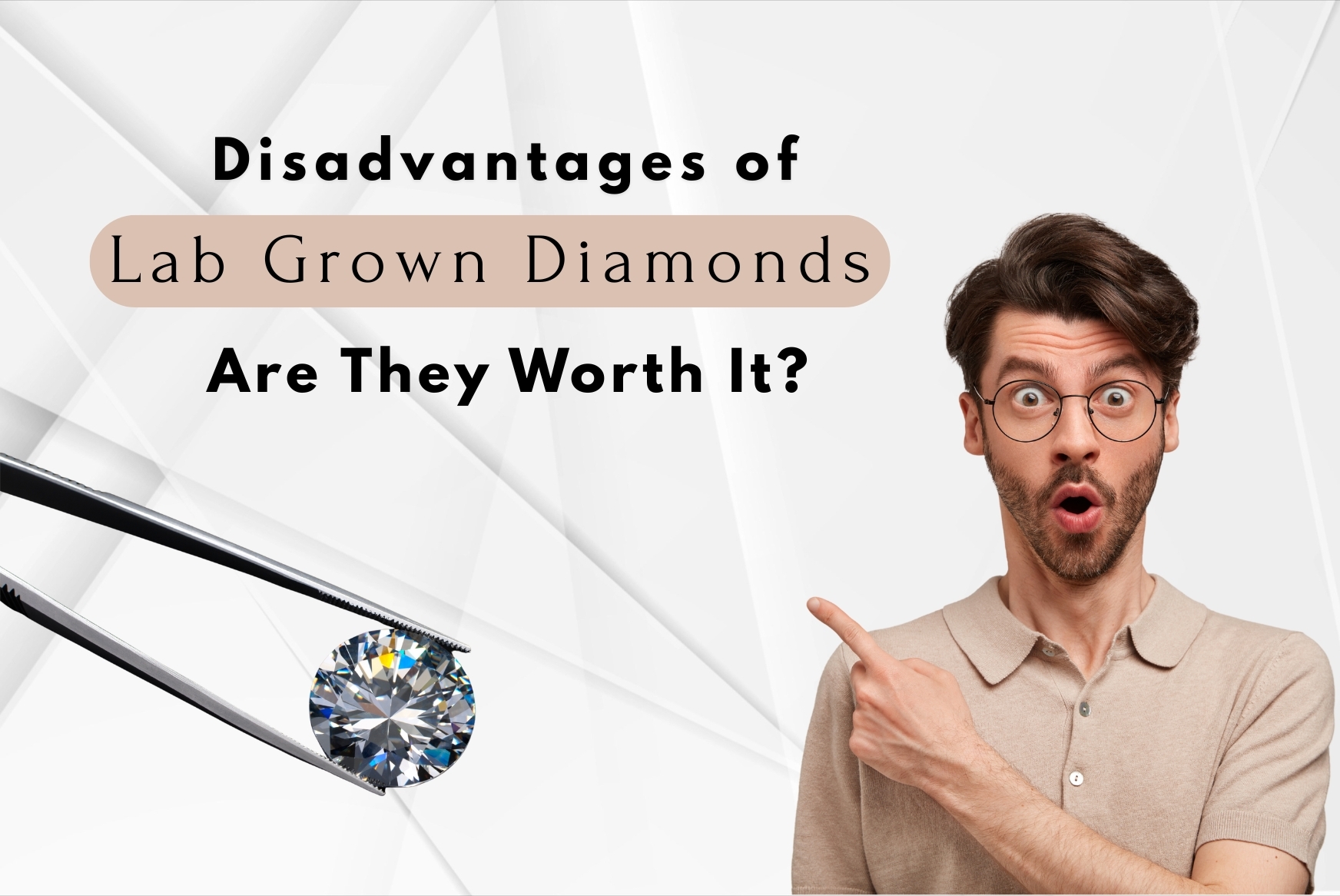Disadvantages of Lab-Grown Diamonds: Are They Worth It?
In 2025, lab grown diamonds have changed the way people buy jewelry. They are very popular for tennis bracelets and engagement rings. This diamond looks and is built the same as a mined diamond. With the method named CVD (chemical vapor deposition) and HPHT (high pressure and high temperature), lab diamonds are made with small carbon atoms using high heat in a controlled laboratory setting, maintaining the same physical properties as mined diamonds. There is no difference in durability between lab grown diamonds and mined diamonds.
However, there is more to it than just the appearance and the cost. A lab diamond is made in a new way and can be more suitable for some people. Still, there are some downsides you should know about before you buy. This guide highlights the primary concerns associated with lab grown diamonds. We cover financial issues, emotions, trust in the market, and how addressing them might impact or benefit the world. That way, you can know what is best for you.
Is There Any Reason Not to Buy a Lab Diamond?
Before purchasing a lab-grown diamond, you may want to know why some people feel uncertain about them. This worry is not about how it looks. It is more about its value, how long it lasts, and what people think about it. A lab diamond can look perfect, but it does not always act the same as a natural one in the market. Some limits can change how you feel about it over time.
Low Resale Value Compared to Natural Diamonds
One thing to think about with lab made diamonds is that they have a low resale value. Resale value refers to the amount a property will be worth in the future when it is sold. This is different from natural diamonds. The supply of natural diamonds is limited, so they tend to keep their worth over time. Lab grown diamonds, on the other hand, can be made as many times as people want. This means the price can go down, and their resale value is not as high as a rare mind diamond.
If you want to sell or upgrade your jewelry later, be prepared to recoup only a small portion of the price you paid, as you will also receive less compared to natural diamonds. The market for used lab diamonds is still not big. Most jewelers like natural stones more because they have resale value that is easier to determine. But if you are having a high quality, unique lab diamond that not everyone can make, it may hold value in the future.
Limited Buyback and Resale Opportunities
Many jewelers and pawn shops do not have buyback programs for lab grown diamonds. This is because people can make these stones anytime, so there is always a new supply of them. Retailers do not want to buy used lab-grown diamonds when they can get new ones that may cost less.
This can make it hard for you if you want to trade in or sell your jewelry later. The resale system for lab-grown diamonds is not as strong as the one for natural diamonds.
Is a Lab Diamond a Bad Investment?
Yes, lab grown diamonds or any other diamond that is not rare, even some natural diamonds, are not a good way to invest your money. Because people don’t buy diamonds as an investment, they usually buy diamonds for their loved ones to make them happy, not for future planning to sell them later. Prices for gems are dropping fast as technology keeps getting better. You will save money when you buy one now, but they do not keep or go up in value like some natural diamonds can. It is better to see lab diamonds as a style or ethical choice, not something to make money on later.
What Is the Problem with Lab Grown Diamonds?

The problems are not just about how much you pay or how shiny the diamonds look. These things also relate to the way people see these diamonds in social circles, if they are covered by insurance, and how they are checked by experts.
Lack of Rarity and Exclusivity
A natural diamond gets its value because it was made deep under the ground, under a lot of pressure, over a long time. A lab grown diamond does not have this long story. So they do not feel rare or special like a natural diamond. This can take away some of the strong feeling and meaning that comes with a real diamond. For people who collect or those who follow old traditions, this is what makes a natural diamond feel more appealing.
Sentimental and Symbolic Limitations
An engagement ring or a special gift for an anniversary can mean forever and a love that never ends. To some people, a diamond that grows in a lab in just a few weeks does not feel the same. The story about a real diamond from nature being “eternal” is hard to make with lab-grown diamonds, and many people still feel this way when they buy an engagement ring.
Cultural and Traditional Resistance
For many years, people have seen natural diamonds as a top symbol of love, money, and success. Even though more people now accept lab-grown stones, there are still many cultures and families that want to have mined diamonds, especially for family jewelry that gets passed down. A lot of older people feel that lab created diamonds are not as good as natural ones, or that they are just a “temporary” choice.
Market Acceptance and Social Perception
Lab-grown diamonds are becoming more popular now. Still, they have not been accepted by everyone in the jewelry market yet. Some jewelers feel unsure about selling them. There are luxury brands that prefer mined stones more. For buyers who care a lot about image, this mix of opinions can be a problem. It is more so for people who want traditional luxury.
Difficulties in Insurance and Certification
It can be hard to make sure a lab-grown diamond holds its value. These diamonds lose value quickly. Insurance companies will cover them for what they are worth now, not what you paid at first.
Certification can also change from one place to another. Many lab-grown stones are checked and graded by well-known groups like IGI or GIA. But not all labs work the same way. Smaller labs sometimes have different standards. This can cause grading and trust in these stones to not be the same everywhere.
Can a Pawn Shop Tell if a Diamond Is Lab-Grown?
Mostly not with naked eyes, a person, even a diamond expert, or jeweler at a pawn shop, could not tell the difference between lab grown diamond and a natural one by just looking at it. It is necessary to have special equipment or a 10x magnification to tell. Without these, a lab diamond cannot be detected. So, it’s better to have a certification of the diamond, which clearly shows its origin. This is the easiest way to tell if your diamond is lab grown or natural.
Production, Quality, and Environmental Drawbacks

Lab created diamonds are sold as a green option. But, they are not always good for the earth. To make them, there needs to be strong heat and high pressure. This step uses a lot of energy, which can harm the planet, but not as much as natural diamonds.
High Energy Consumption During Creation
Making a lab grown diamond uses a lot of electricity. This is to copy how the Earth makes real diamonds. If the lab uses power from fossil fuels, the carbon output can be very high. At times, this can be close to what small mining sites make. A lab-grown diamond will only be truly green if it is made using renewable energy.
| Energy Source | Sustainability Level |
|---|---|
| Fossil Fuels | Low |
| Renewable Energy | High |
Potential for Quality and Clarity Variations
Lab diamonds are the same as natural diamonds when you look at their properties. The way people make them in a lab and putting carbon atoms into a chamber and which can sometimes cause small problems in their structure. You won’t see these with your eyes, but these things can change the clarity grade and color. The way labs make these diamonds is not always the same. This means the quality can change from one place to another depending on the expertise of the manufacturer.
What Do Jewelers Say About Lab-Grown Diamonds?
People do not all feel the same about this. Many in the diamond industry like that lab-grown stones are new, available in a wide range of options, and cost less money. But some are still careful about them. The old jewelers say lab-grown stones change what makes diamonds special and rare. They feel that these stones might change how people see diamonds and how much diamonds are worth in the long run.
Some experts also warn that if more places start to grow these diamonds in labs, too many will be on the market soon. This can push prices even lower, but not as low as other simulated diamonds or. In short, lab diamonds let more people buy luxury, but they also make luxury feel less special and not as rare.
Advantages of Lab-Grown Diamonds

It is important to see both sides, but lab-grown diamonds have some big advantages. Many people find them a more attractive option because their lower cost lets you get a bigger or better stone for your money. Also, they come from ethical sourcing and can be a more sustainable alternative to traditional mining. For lots of buyers, these benefits outweigh what is missing.
These good points are one reason why more people are buying them in the jewelry market. In the next parts, we will talk about why a lab-grown gem can be the right pick for you.
Cost-Effectiveness
The best reason to pick a lab-grown diamond is the lower cost. These gems usually cost 20-50% less than natural diamonds that are the same size and quality. This price gap allows more people to get the diamond jewelry they like.
With the money you save, you get more choices with your budget. You may pick a stone with a higher carat weight, go for a nicer cut, or choose a more detailed setting. This means you can get the look you want for your jewelry without spending too much. The affordability helps you to show off your style even more.
Think about what it means when the price is lower for your buy:
- You can get a bigger stone for the same price.
- More of what you spend can be used for a custom or designer look.
- High-quality diamond jewelry is something more people can have.
Design Versatility
The advanced technology used to create a lab-grown diamond makes many new designs possible. Because they are made in a lab, people can make diamonds in many shapes, sizes, and even bright colors. Some of these colors are extremely rare and would be very expensive in natural diamonds.
This design is good because you can keep up with current fashion trends or make your own style of jewelry. If you want a pink diamond that is popular right now, or you want a special cut that is hard to get, lab-grown options help you get what you want. They also cost less and make it simple for you to bring your idea to life.
If you have a creative side, this is a big plus for you. You do not have to stick to what you get from traditional mining. You can pick from more choices and make something that shows your own style.
Quality and Customization

When you pick a lab-grown diamond, you get a high-quality stone. The way manufacturers make these diamonds gives them control over each step. They start with a diamond seed and help it grow to achieve the desired results. Because of this, lab-grown diamonds often have excellent clarity and a good cut. This helps each diamond shine and look bright.
This kind of control helps you create a design that fits what you want. You get to ask for what you need in your stone, making sure it matches your ideas. Trusted lab diamonds are checked and graded by the same groups as natural diamonds. These groups include GIA and IGI. So, you can feel sure about their grading.
This means you do not have to give up good quality just to save money. You can get a great-looking, top diamond that is made just how you want. You can feel sure about what you get, as it has certified qualities.
Ethical Production and Environmental Sustainability
For many conscious consumers, the main reason to pick lab-grown diamonds is that the process has fewer ethical issues. Diamond mining has a dark past. There have been many human rights abuses and problems, like money being used in wars. Lab-grown gems give a better choice. They are made in a lab, so you do not have to worry about these problems.
Lab-grown diamonds have a good environmental impact compared to traditional diamond mining. These diamonds do not cause big land problems or use a lot of water like diamond mining does. The factory process for making them needs a lot of energy. Still, many producers now choose sustainable practices and use renewable energy to help the planet.
When you pick a lab-grown diamond, you know your money does not go to causing environmental damage or hurting people. That is why it is a good choice for people today.
FAQs:
Do Lab Diamonds Lose Their Sparkle?
Many buyers want to know if lab diamonds lose their shine or fade as time goes on. The answer is no. Lab grown diamonds are made from pure carbon, like mined ones. They have the same optical properties and hardness as diamonds found in nature.
Do Lab Diamonds Go Dull or Look Fake?
No, a lab diamond does not look fake like moissanite and CZ. The sparkle stays the same. But the lab diamond is easy to get and costs less. Some people think it is not as real as others. Because of this, some feel a lab diamond is not as special, especially when used for big moments like an engagement ring.
What are the Downsides of Lab-Grown diamond jewelry?
Jewelry is often more than something you wear. It can hold special meaning, tradition, love, and memory. A lab created diamond, made fast in a laboratory, may not feel as special or romantic to some people who like the idea of a stone that took billions of years to form naturally.

